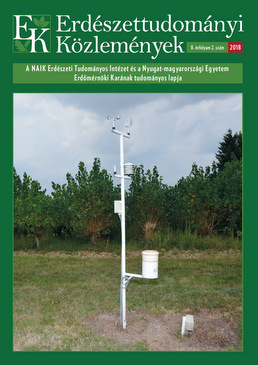Impact of weather conditions on the interannual growth characteristics of alder and oak stands with improved groundwater-management
Balázs Garamszegi, Melinda Nagy-Khell, Máté Farkas & László Nagy
Correspondence
Correspondence: Garamszegi Balázs
Postal address: H-9600 Sárvár, Várkerület 30/A.
e-mail: garamszegib[at]erti.hu
Abstract
Tree ring analysis in common alder (Alnus glutinosa) and pedunculate oak (Quercus robur) stands were carried out as a part of the monitoring tasks related to the KASZÓ-LIFE project, which targeted to improve the groundwater supply of the project area. Aims of the research were to identify benefits of the increased groundwater level and its more balanced interannual course due to the technical interventions in the growth of the sample trees. A specific focal point was to assess the sensitivity of the annual increments to the severe weather events like droughts under the changed conditions. The preliminary results reveal a much stronger relationship of alder growth with climate (first of all, with summer rainfall and mean relative humidity) than in case of oak, even when considering the generally higher groundwater level of alder stands. Regarding the benefits of the technical interventions, a series of severe drought years after 2000, selected by the 6-month SPEI drought index and decrease in alder increments indicate that following the actions, growth decrease of alder stands were significantly lower than the rate at the control site in 2017, though a reverse tendency was common during all the previous drought periods. However, the average increment decline of all investigated stands was much stronger in this year, than it could be predicted by the weather conditions based on the growth-climate relationships dating back to the previous decades, giving a possible evidence of unfavorable climatic trends and recurrent drought periods, even parallel with the mitigating actions.
Keywords: KASZÓ-LIFE, groundwater, drought, common alder, pedunculate oak, tree-ring analysis
Open Acces
For non-commercial purposes, let others distribute and copy the article, and include in a collective work, as long as they cite the author(s) and the journal, and provided they do not alter or modify the article.
Cite this article as:
Garamszegi, B., Nagy-Khell, M., Farkas, M. & Nagy, L. (2018): Impact of weather conditions on the interannual growth characteristics of alder and oak stands with improved groundwater-management. Bulletin of Forestry Science, 8(2): 9-16. (in Hungarian) DOI: 10.17164/EK.2018.017
Volume 8, Issue 2
Pages: 9-16
First published:
10 August 2018
Related content
8
More articles
by this authors
6
Related content in the Bulletin of Forestry Science*
More articles by this authors in the Bulletin of Forestry Science
* Automatically generated recommendations based on the occurrence of keywords given by authors in the titles and abstracts of other articles. For more detailed search please use the manual search.
